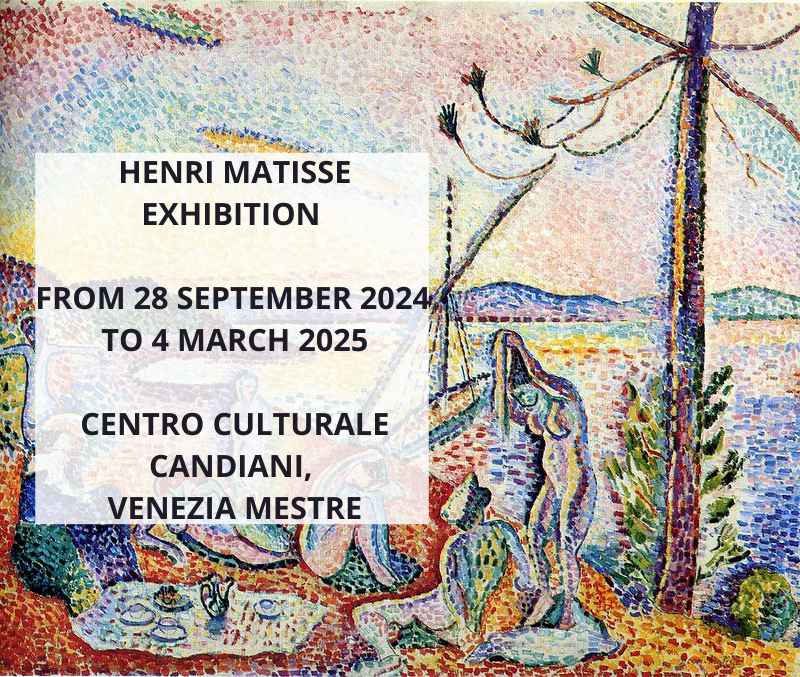Henri Matisse Exhibition "Light of Mediterranean"
From: 28-09-2024 To: 04-03-2025 Centro Culturale Candiani, Piazzale Candiani 7, Venezia MestreTELEFONO E FAX: +39 041 2746111
WEBSITE: muvemestre.visitmuve.it
EMAIL: candiani@comune.venezia.it
LOCATION: Centro Culturale Candiani, Piazzale Candiani 7, Venezia Mestre
The Henri Matisse exhibition at the Centro Culturale Candiani presents a new and captivating project, drawing from the civic collections of modern art at Ca’ Pesaro. This exhibition focuses on the work of Henri Matisse, one of the most significant masters of the 20th century, and his connection to the vibrant artistic movements of his time. Featuring three important lithographs from the 1920s and two drawings from 1947, all from the Galleria Internazionale d’Arte Moderna, the exhibition brings Matisse’s work into dialogue with that of his contemporaries, including Henri Manguin, André Derain, Albert Marquet, Maurice de Vlaminck, Raoul Dufy, and Pierre Bonnard.
Matisse, known for his expressive use of color and line, played a key role in the Fauve movement, which sought to break free from traditional artistic constraints. Central to the Henri Matisse exhibition is the idea of light and color, particularly the Mediterranean light that inspired many of the artists on display. The Fauves, including Matisse, were driven by a desire to capture the golden light of the Mediterranean, a light that “suppresses shadows,” as Derain once wrote to Vlaminck. This light, along with the vibrant use of color, formed the foundation of their expressionist approach.
The exhibition weaves Matisse's artistic journey with those of his close contemporaries, showcasing how these artists revolutionized modern European art by focusing on the inner qualities of mimetic painting, both optical and conceptual. Matisse’s deep connection to the Mediterranean, especially to cities like Nice and Saint-Tropez, is a prominent theme throughout the exhibition. These locations were central to the evolution of his art, shaping the visual language of the 20th century and influencing the way future generations approached color and form.
Drawing plays a vital role in Matisse’s work, often bordering on obsession, as seen in his meticulous attention to the arabesque lines of his female figures and his reflections on the decorative arts. His work, as explored in the Henri Matisse exhibition, embodies the concept of “pleasure in drawing,” a notion also reflected in the writings of philosopher Jean-Luc Nancy. The exhibition not only explores Matisse’s mastery but also examines how his friendships and collaborations with artists like Derain and Vlaminck contributed to the artistic revolutions that shaped modern art.
At the heart of the exhibition is the Mediterranean itself, a geography of artistic creation that served as a muse for Matisse and his peers. The Mediterranean, with its vivid colors and dynamic landscapes, became a central figure in their work, symbolizing freedom and expression. Through this Henri Matisse exhibition, visitors can explore how the region's light and landscapes profoundly influenced Matisse and left an enduring legacy on 20th-century art.
Images courtesy of https://www.flickr.com/photos/gandalfsgallery/7793747306 - Ph. Gandalf's Gallery
 ?>
?>